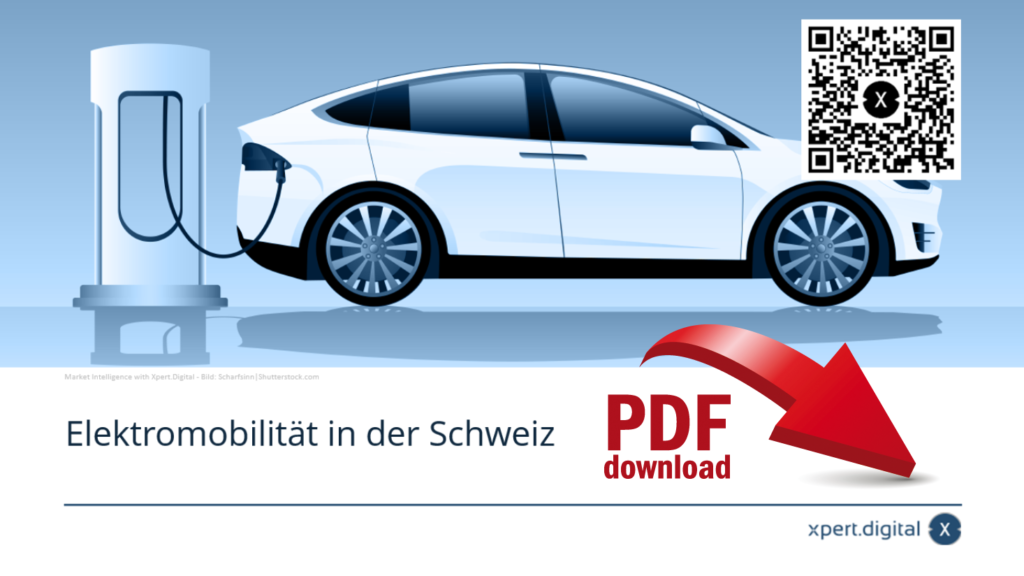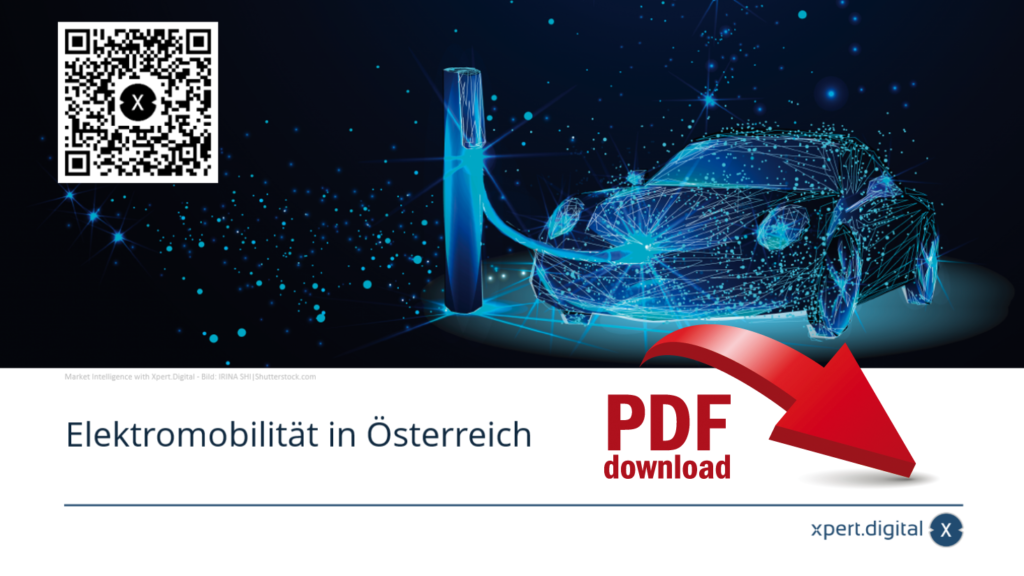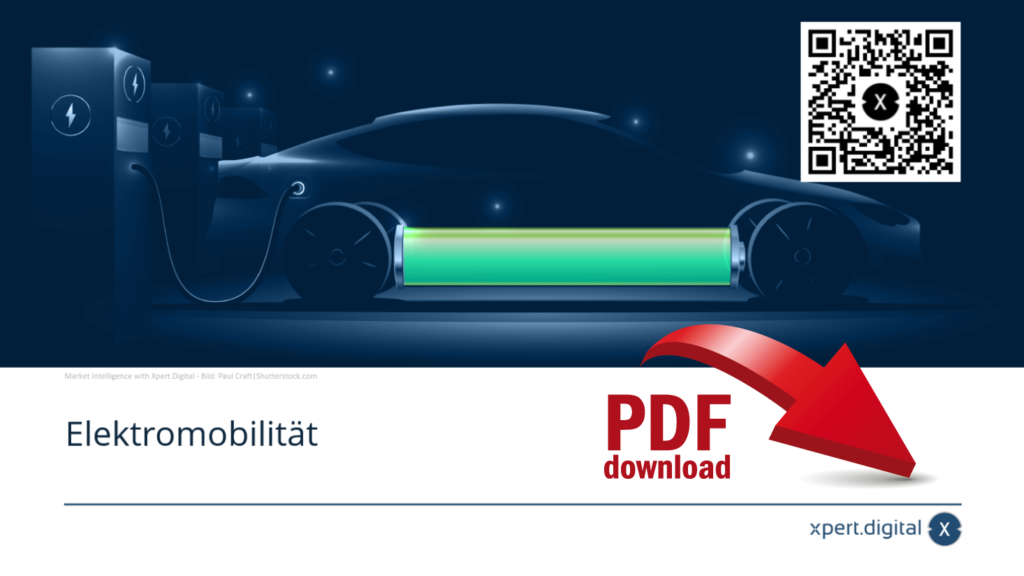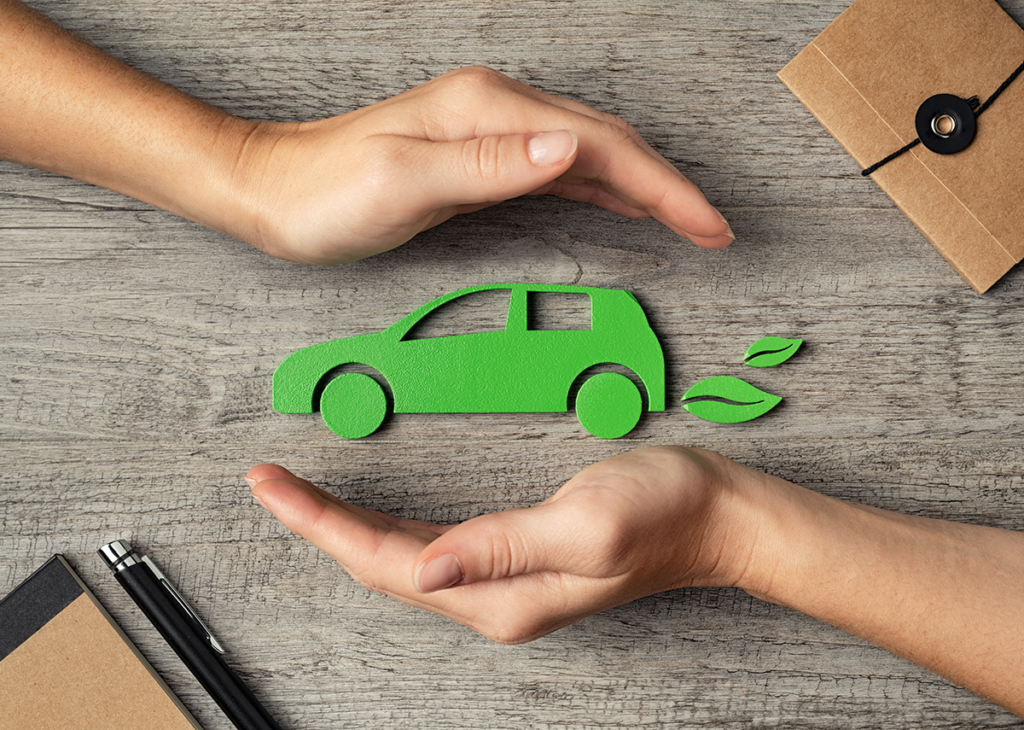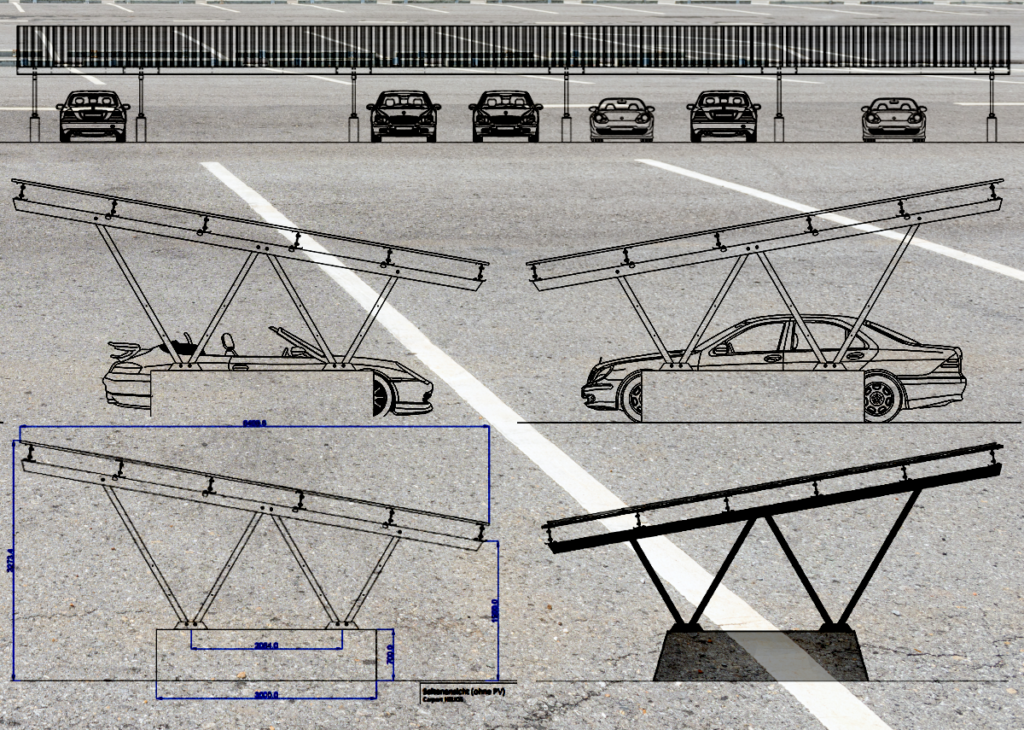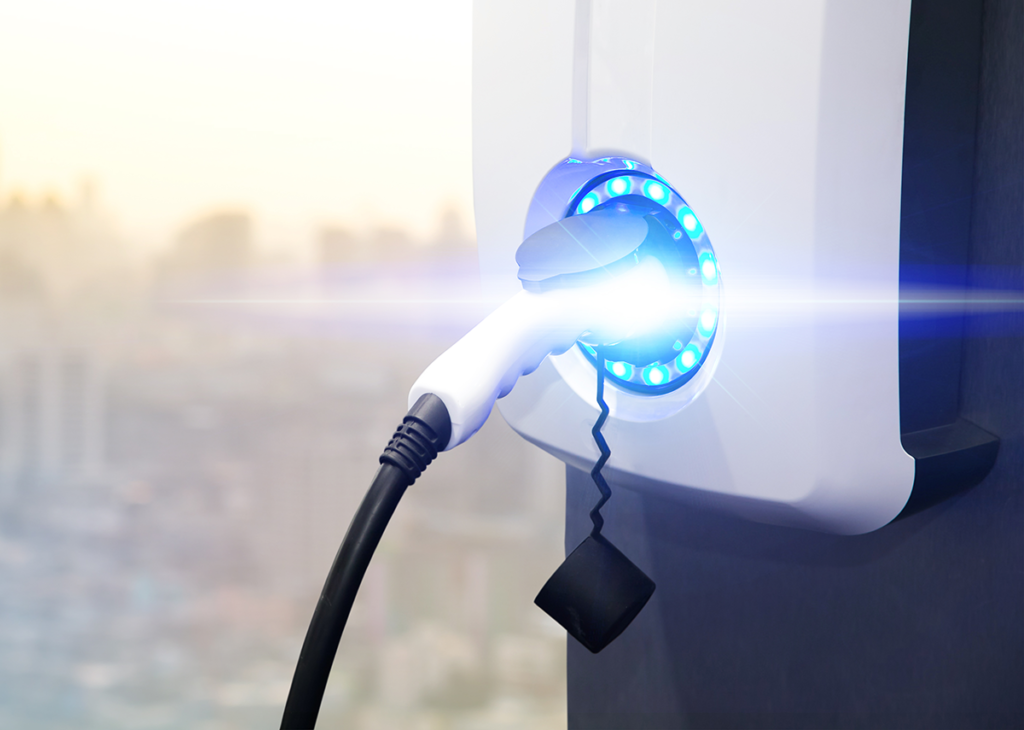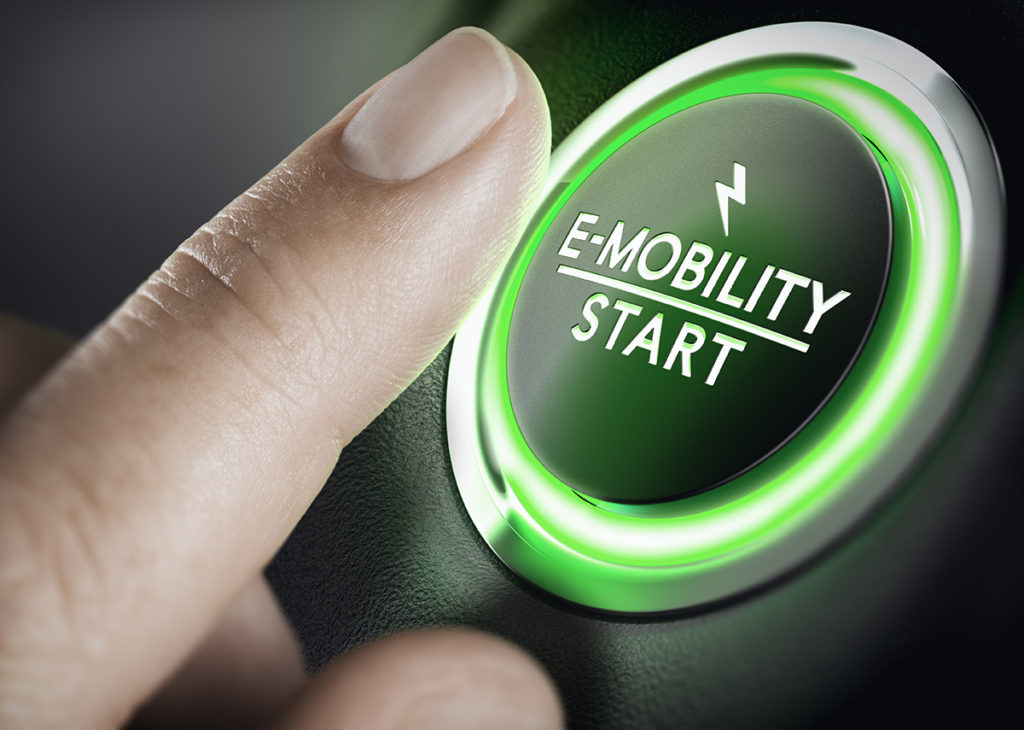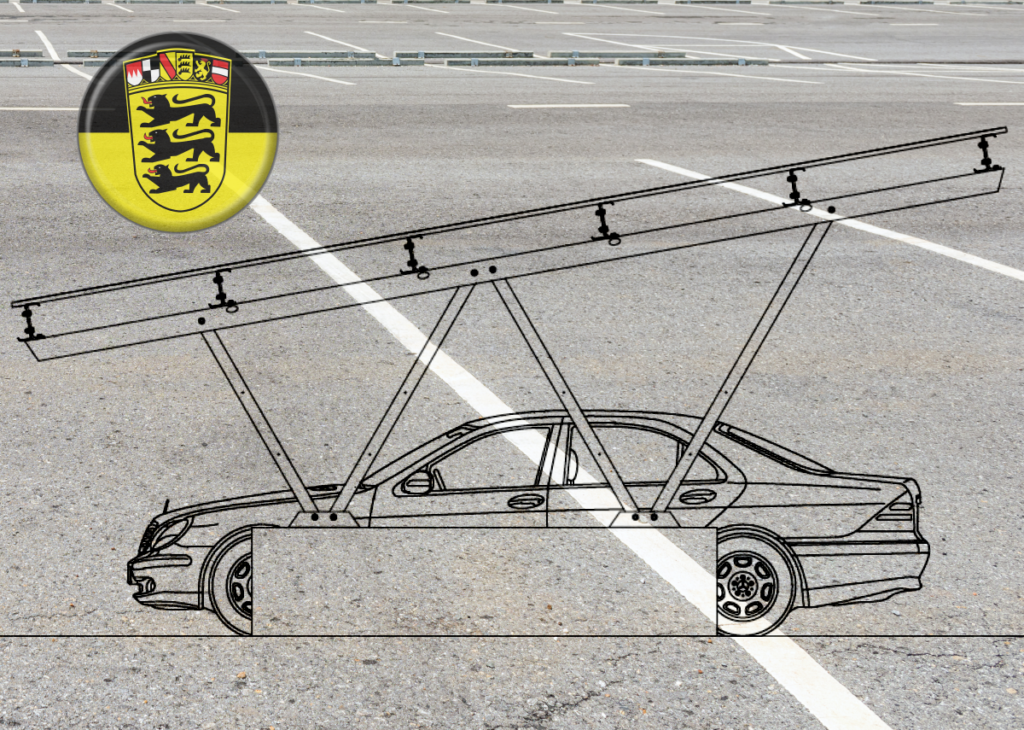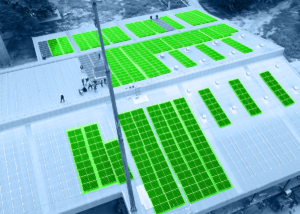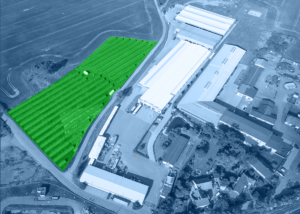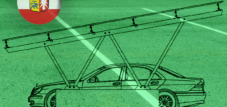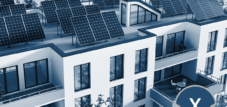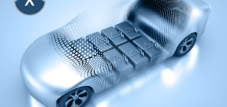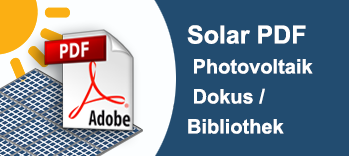Electromobility, the solar obligation and the solar carport topic in Germany - with PDFs
Language selection 📢
Published on: October 22, 2021 / update from: October 25, 2021 - Author: Konrad Wolfenstein
The share of electric cars in the car population in Germany has increased continuously in recent years and was around 1.22 percent in 2021 (BEV and PHEV). The share of electric cars in new registrations was 6.7 (BEV) and 6.9 (PHEV) percent. According to one forecast, the share of electric cars in the fleet could be 11.1 percent by 2025 and 24.4 percent by 2030.
According to the Federal Motor Transport Authority, in 2021 the number of passenger cars with purely electric drives (BEVs) in Germany will number over 365,000 vehicles; in 2011 there were only around 2,300 electric cars in Germany. In addition to pure battery electric cars, hybrid cars are also often equipped with an electric motor in practice; a special form of hybrid vehicles are the so-called plug-in hybrid cars (PHEV), which can be charged externally (via a plug). Depending on how they are viewed, plug-in hybrids and BEVs are grouped together as electric cars (externally chargeable). The statement that the goal of one million electric cars in Germany was achieved in July 2021 is also based on this definition.
Electric cars are vehicles that are partially or completely powered by an electric motor:
BEV - Battery Electric Vehicle
BEV-REx - Battery Electric Vehicles with Range Extender
HEV - Hybrid Electric Vehicle
PHEV - Plug-in Hybrid Electric Vehicle
REEV - Range Extender
FCEV - Fuel Cell Vehicle (Fuel Cell Electric Vehicle)
A range extender (REx) is a purely electric vehicle. Nevertheless, it has a small combustion engine to recharge the battery. This only supplies the battery with power. It is not connected to the vehicle's drive.
Electromobility Xpert PDF collection
- Electromobility in Germany – PDF download
- Electromobility in Switzerland – PDF download
- Electromobility in Austria – PDF download
- Electromobility – PDF download
- Drive technologies for cars – PDF download
- PDF library about solar, photovoltaics and solar systems
Photovoltaics in Europe
In 2019, Spain was the largest solar market in Europe with an expansion of 4.7 GW. Spain has not achieved this feat since 2008. The main solar markets for 2019 were Germany (4 GW), the Netherlands (2.5 GW), France (1.1 GW) and Poland, which almost quadrupled its installed capacity to 784 MW. This trend towards increasing solar installations was observed across the EU: 26 of the 28 member states installed more solar systems in 2019 than in the previous year. By the end of 2019, the EU will have a total of 131.9 GW, an increase of 14% compared to last year's 115.2 GW.
More about it here:
Electromobility in Norway
While Norway's policy measures (e.g. tax exemptions, toll exemptions and other incentives) have proven to be very effective in promoting electric cars, the Norwegian model cannot be easily transferred to other countries. First and foremost, the country charges hefty import duties and registration taxes, which make cars significantly more expensive than in the United States. By waiving these tariffs on electric vehicles, Norway is effectively subsidizing the purchase of electric vehicles to a degree that a larger country like the United States cannot afford. Secondly, Norway is a very wealthy country (ironically thanks to its oil reserves) with a high income level. According to Norway's National Statistical Institute, the median household income after taxes was almost $60,000 in 2017, about the same level as the United States but more than twice the EU average.
More about it here:
The world needs batteries for electromobility

Lithium-ion batteries: The world needs batteries for electromobility – Image: PP77LSK|Shutterstock.com
Global demand for lithium-ion batteries for electric vehicles will increase rapidly this decade. As the estimate shows, demand will be greatest in China - followed by the European Union and the USA. Many car manufacturers have committed to the goals of the Paris climate targets and are also required by law to have an ever larger proportion of their fleet powered by batteries. The most recent example is the EU Commission’s “Fit for 55” climate protection program. Car manufacturers such as Volkswagen, Daimler and BMW are responding with sometimes quite ambitious fleet targets for reducing CO2 emissions, which is likely to ensure continued high demand for batteries in the “Electric Mobility” sector in the coming years. The current government support measures in Europe in favor of purely battery-operated automobiles (BEVs) are further increasing the demand for batteries.
More about it here:
How is the safety of electric cars checked?
The path to an industrial society that is committed to sustainability and is aware of its responsibility towards future generations leads to a future without the use of nuclear energy. The central point here is the expansion of renewable energies. New technologies for energy production and extraction as well as emission-free transportation are becoming increasingly important. The promotion of these technologies continues to progress. Virtual power plants are already connecting a wide variety of energy producers and electricity consumers.
More about it here:
Solar carport installation for electromobility in Germany
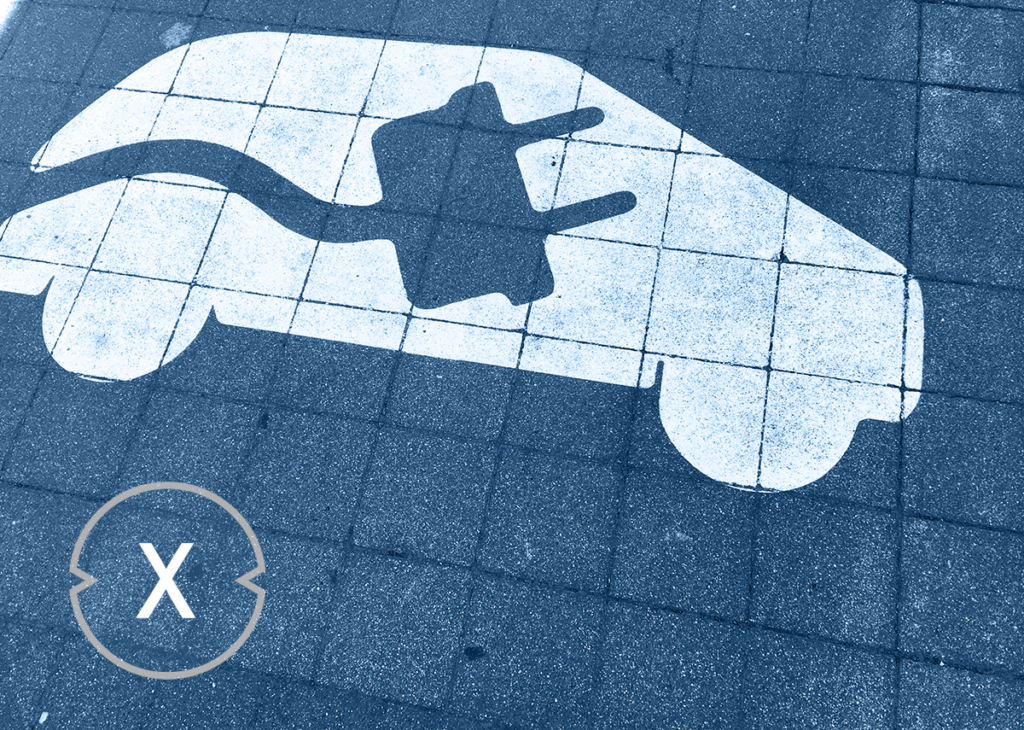
Solar carport installations for electromobility – Image: Xpert.Digital & Heliographer|Shutterstock.com
Advice and planning by Xpert.Solar
Germany sees electromobility as a driving force for a possible energy transition in the country, namely the exit from fossil fuels. Considering that the German automotive industry is one of the most important pillars of the national economy and also plays a key role on a global level, at a time when industries are expected to find climate and environmentally friendly solutions for production and use , widespread access to electric vehicles will be both the start of a new, greener era and a massive source of revenue.
In short, ideally electric cars should lead to reduced emissions, sustainable energy efficiency and more flexible mobility solutions for consumers. The vehicles are connected to a charging station and charged via the existing power grid. The stations can be either private or publicly accessible. Electric cars are powered by rechargeable batteries. The types of electric cars available in the German market are hybrid, mild hybrid, battery electric and plug-in hybrid, and Renault is the best-selling electric car brand in the country. Tesla is the world's leading electric car manufacturer.
More about it here:
More green electricity from solar carports – the solar filling station of the future
The carport, once discovered as a cheap alternative to the more expensive and increasingly narrow garages, is now increasingly becoming a lifestyle and all-rounder object of the future.
With photovoltaics and the growing importance of green electricity, the “car port” (a combination of the English terms “car” and “port”) is developing into a decentralized and networked solar filling station of the future. In the future, the car will no longer just be passively protected from weather-related weather, but now sustainable green electricity will also be produced through photovoltaics on the roof and, ideally, “parked” in an electricity storage system.
More about it here:
📣 Open parking areas Photovoltaic solutions for industry, retail and municipalities
Everything from a single source, specially designed for solar solutions for large parking areas. You refinance or counterfinance into the future with your own electricity generation.
🎯 For solar engineers, plumbers, electricians and roofers
Advice and planning including a non-binding cost estimate. We bring you together with strong photovoltaic partners.
👨🏻 👩🏻 👴🏻 👵🏻 For private households
We are positioned across regions in German-speaking countries. We have reliable partners who advise you and implement your wishes.
Charging infrastructure for electromobility in Germany
In Germany, fossil energy consumption accounts for more than 50% for cold and heat. Be it room heating or air conditioning. This includes hot water, process heat (e.g. cooking, washing, burning or welding) and cooling. Renewable energies are now increasingly playing an important role here.
In addition to heat and cold, petroleum is an important component for mobile transportation. Globally, transport accounts for 40% of oil consumption. In the EU it is even more than 60%! The Federal Institute for Geosciences and Natural Resources assumes that oil will be used up in 40 years if things continue as before.
For this reason alone, a timely rethink is necessary and continuing to compare the emissions of electric cars and combustion engines is not helpful. Electric cars run emission-free. Combustion engines are more environmentally and climate-friendly in their manufacture and production. The current Achilles heel of the electric car is battery production. Another weak point is currently the availability of charging points or charging stations.
More about it here:
Electromobility in Europe
Despite difficult circumstances and the negative impact of the pandemic on the automotive industry, electric vehicles took a big leap forward in many countries in 2020. According to estimates by the industry tracker EV Volumes, plug-in electric vehicles accounted for 4.2 percent of global light vehicle sales last year, up from 2.5 percent in 2019. While only eight countries reported an EV share of 5 percent or more in 2019, 13 countries managed to increase the share of electric vehicles in new car sales to over 10 percent in 2020. As in previous years, Norway was a positive outlier with a 75% share of plug-in electric vehicles, while Iceland, Sweden and Finland also featured in the top five - evidence of the rapid adoption of electric cars in the Nordic countries. China, by far the largest electric car market in terms of sales, fell out of the top 10 with a 6.2 percent share of passenger car sales in the country. Meanwhile, the United States fell further behind, with EV share at just 2.3 percent.
More about it here:
Electromobility is coming

Electromobility is coming slowly, but it is coming – Image Xpert.Digital, Roman Babakin|Shutterstock.com
In 2009 there were just under 1,500 electric cars in Germany. A good decade later, according to the Federal Motor Transport Authority, there will already be around 309,000 electric vehicles in 2021. Not Tesla, but Renault's Zoe was the most frequently registered electric car in Germany in 2020 with almost 30,000 new registrations (2nd place: Tesla Model 3 - 17,438). However, worldwide, Tesla and its Model 3 lead the ranking of electric car sales at the end of 2020 with around 813,000 vehicles sold, ahead of VW, SAIC and BMW. The Nissan Leaf follows in second place worldwide with almost 500,000 electric cars sold. Tesla Model S occupies third place with just over 300,000 new registrations.
More about it here:
Solar carport advice – planning and building with electricity storage as a solar charging station for electric cars
More and more people are thinking about purchasing a carport with photovoltaics. In combination with an electricity storage system, this type of solar system is developing into a real alternative for climate neutrality and at the same time as a sustainable energy source for electric vehicles such as e-bikes and the like.
The general public is now becoming increasingly aware of the acceptance and possibilities and more and more operators of public parking spaces such as companies with large corporate parking spaces are thinking about doing their part. The financial advantages are also crucial, but the independent and autonomous power supply is also an important point.
More about it here:
Solar compulsory & solar carport compulsory in Germany

Solar compulsory and solar carport compulsory in Germany – Image: Xpert.Digital / petovarga|Shutterstock.com
Several federal states have already decided on a requirement for solar systems, namely for:
- Residential buildings and non-residential buildings
- Private and commercial new buildings
- For roof renovations
- Open parking spaces ( solar carport /solar filling stations)
However, it varies in each federal state. Not every federal state supports a solar carport requirement or a solar requirement for private new buildings.
More about it here:
Baden-Württemberg (solar carport requirement begins: 2022)
As a rule, a carport is made of wood, steel or aluminum, but there are also plastic versions. Carports have a flat roof, higher quality versions have more complex constructions such as a gable roof, hipped roof or a barrel roof. A carport can be open on all sides, although elements are also available with which individual segments can be completely or partially closed. These elements can be made of sheet steel, wood, glass, WPC panels (wood-plastic composite), HPL panels (high-pressure laminates) or polycarbonate double-wall panels. In contrast to the garage, the carport is open at least on one side. A common variant of roof covering is corrugated metal, trapezoidal metal or their transparent forms, corrugated profile light panels or trapezoidal panels. Open carports without a roof are usually used as a visual border for outdoor parking spaces in order to highlight them from surrounding open spaces. The free areas of the roof are increasingly being used for solar systems and extensive green roofs.
More about it here:
North Rhine-Westphalia (solar carport requirement begins: 2022)

Photovoltaic systems mandatory in North Rhine-Westphalia? – This should interest you – Image: Xpert.Digital & Butusova Elena|Shutterstock.com
In general, over 16 percent of electricity consumption in North Rhine-Westphalia was provided by renewable energies in 2019. With this amount alone, Bremen, Hamburg and Mecklenburg-Western Pomerania could be completely supplied with electricity.
The solar cadastre of the State Office for Nature, Environment and Consumer Protection (LANUV) North Rhine-Westphalia calculated the solar potential of 68 terawatt hours of electricity per year on the roofs of North Rhine-Westphalia. In fact, only 4.5 terawatts of solar power were generated with photovoltaics in 2019 - a meager 6.6 percent of the existing potential.
More about it here:
Rhineland-Palatinate (solar carport requirement begins: 2023)

Solar obligation or solar carport obligation in Rhineland-Palatinate – Image: Xpert.Digital / nnattalli|Shutterstock.com
“The solar requirement for new commercial buildings and new commercial parking spaces with more than 50 parking spaces is an important milestone in achieving our PV expansion goal. In order to generate our electricity from wind, sun, biomass and water by 2030, we must at least triple the proportion of solar energy to 7,700 megawatts. The solar obligation will provide us with significant support here,” said Climate Protection Minister Anne Spiegel. “As a climate protection ministry, we will support companies in implementing the solar obligation: a more specific state regulation and advisory services from the Rhineland-Palatinate Energy Agency, among others, are being planned,” Spiegel continued.
More about it here:
Schleswig-Holstein (solar carport requirement bill)
The climate protection and energy transition report published last year showed a gap in the expansion of renewable energies. This should be largely closed through greater expansion of photovoltaics (PV). Recent studies predict a potential of 7 to 9 gigawatts for photovoltaics on buildings in Schleswig-Holstein; currently only 1.1 gigawatts have been realized. “We want to significantly advance the necessary expansion of renewable energies with photovoltaic systems on roofs, parking lots and open-space systems. Photovoltaic systems are economically attractive for investors and make a contribution to climate protection. This strengthens the country’s ecology and economy equally,” said Albrecht. The solar requirement for solar carports in Schleswig-Holstein will come.
More about it here:
- Warehouses, production halls and industrial halls with their own power source from a photovoltaic roof system - Image: NavinTar|Shutterstock.com
- Industrial plant with its own power source from an outdoor photovoltaic system - Image: Peteri|Shutterstock.com
- Plan solar systems with photovoltaic solutions for freight forwarding and contract logistics
- B2B solar systems and photovoltaic solutions & advice
- Plan photovoltaics for warehouses, commercial halls and industrial halls
- Industrial plant: Plan a photovoltaic open-air system or open-space system
- Plan solar systems with photovoltaic solutions for freight forwarding and contract logistics
- B2B solar systems and photovoltaic solutions & advice
Photovoltaic system solutions: Xpert.Solar for planning and consulting in the area of solar carports, PV open space systems, solar systems on roofs and in general, such as. E.g. facade solar, balcony solar or solar fences
I would be happy to serve as your personal advisor.
You can contact me by filling out the contact form below or simply call me on +49 89 89 674 804 .
I'm looking forward to our joint project.
Xpert.Digital – Konrad Wolfenstein
Xpert.Digital is a hub for industry with a focus on digitalization, mechanical engineering, logistics/intralogistics and photovoltaics.
With our 360° business development solution, we support well-known companies from new business to after sales.
Market intelligence, smarketing, marketing automation, content development, PR, mail campaigns, personalized social media and lead nurturing are part of our digital tools.
You can find out more at: www.xpert.digital – www.xpert.solar – www.xpert.plus





